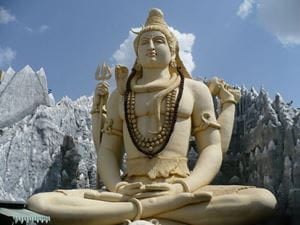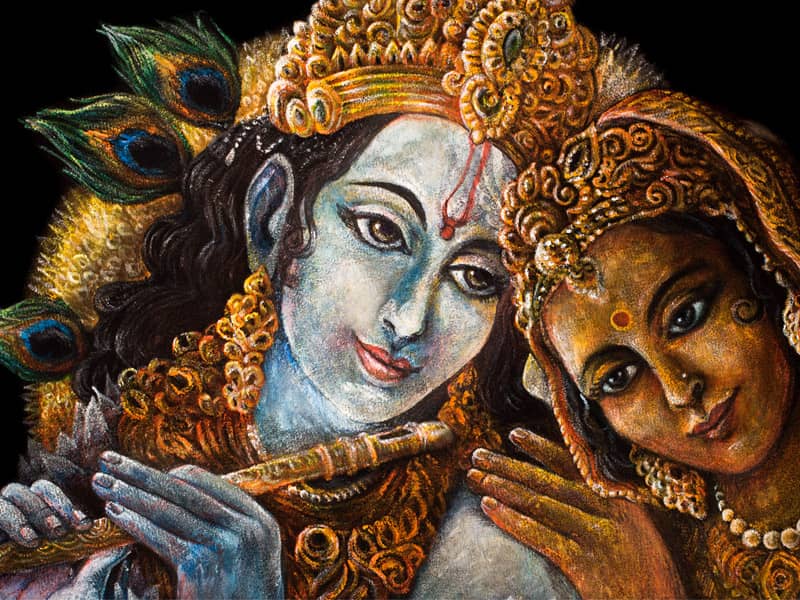
With its status as the third largest religion in the world, and while 80 percent of India’s population regard themselves as Hindus, more than 30 million adherents live outside the country. Chances are, you may find yourself engaged in conversation with an adherent of Hinduism at some point in your life. So to encourage intercultural dialogue, let’s learn some of the main tenants of Hinduism, and dispel some of the mystery surrounding the world’s most ancient religion.
The origins of Hinduism are so remote that they cannot be traced to any certain founder. Current scholarship approximates that Hinduism may have existed as early as 10000 B.C. and that the Rig Veda, the earliest of the Hindu scriptures, was composed sometime before 6500 B.C. Interestingly, the term “Hinduism” is not included in the scriptures—the term “Hindu” was introduced by outsiders when they spoke of people living across the River Indus.
Hinduism is difficult to define. It has no governing body, no prophets, no holy book, and no ecclesiastical order. So how, then, can we understand a belief system that lacks any unified system of beliefs?
We take a look at the big pictures—at overarching themes. Hinduism originated in India, and is marked by belief in reincarnation, an absolute being which has multiple manifestations, a correct path of righteousness, and the desire for liberation from the reincarnation cycle of birth and death.
Like Buddhism, Hinduism is closer to being a culture or way of life than a religion—it’s a system that governs all action. This system can be loosely described in the Hindu Purusharthas, which are the objectives of human life. Classical Hindu theology describes these fourfold goals as Dharma, Artha, Kama, and Moksha. Although it is difficult to truly capture the meaning of these terms in words, we’ll go over the basic meanings of each.
Dharma
Dharma is the all-encompassing ethical goal embraced by Hinduism, and is described as the most important goal an individual can have. Dharma advocates behaviors which are considered to be in accord with Rta, the fundamental sense of cosmic order and balance of the universe which must be observed and sustained through sacrifices, rituals, and behaviors. Behaviors in accord with Rta make life possible, and include concepts such as duty, law, virtue, and right conduct. It is, according to Dutch Indologist Van Buitenen, “that which all existing beings must accept and respect to sustain harmony and order in the world,” and that it is “the pursuit and execution of one’s nature and true calling, thus playing one’s role in cosmic concert.” The remaining Purusharthas are processed through this lens.
Artha
Artha is the virtuous pursuit of wealth for obligations and economic prosperity. The word translates to “means of life,” and applies to both individuals and governments. It is the goal of material prosperity, an attitude which enables one to make a living and thrive, and includes everything in an individual’s environment that allows one to prosper. But it is more than an endless goal of amassing money and material possessions—it is the attitude and necessary requirement of human life. A central premise of Hindu philosophy is that every person should live a joyous life, and so the acknowledgement that all people should pursue the means to live is important, and that pursuit should adhere, as always, to Dharma.
Kāma
Kāma, in short, means desire. This goal encompasses the aesthetic enjoyment of life, the stimulation of the senses, and the fulfillment of wishes, passions, and desires. It is considered an essential goal, both to health and life, when pursued without sacrificing the other Purusharthas. Hinduism acknoweges that life without pleasure is empty and hollow, and that desires should be fulfilled which do not conflict with the virtues of Dharma, or a person’s livelihood, as described by Artha.
Mokṣa
This is the ultimate goal in Hinduism—the endgame. Mokṣa is a concept associated with liberation from suffering and saṃsāra—the cycle of reincarnation. The release from this birth-death-rebirth cycle is called moksha. In differing schools of Hinduism, this state can be achieved either within the physical world, characterized by self-realization and the ability to see the world as it truly is, or it is a true liberation from the cycle, and an end to reincarnation. Mokṣa is achieved through the pursuit of the previous Purusharthas, especially Dharma.
Hindus believe that all beings possess an eternal soul that is the “true self” of the individual, which is called the ātman. In some schools of Hinduism, it is believe that ātman is indistinct from Brahman—the supreme spirit or God. This is often symbolically represented by the syllable, “Om,” a sacred sound and mantra. The goal of life, then, is to realize oneness with the supreme spirit, to realize that ātman is Brahman, and that there is oneness in all life. Brahman is the soul, and the soul is Brahman. Other branches of Hinduism see individual souls as distinct from Brahman and worship Brahman as a supreme being in the form of Vishnu, Brahma, Shiva, or Shakti, depending on the theological sect.
The concept of God in Hinduism can be complex and somewhat depends upon individual beliefs, which can run the gamut from monotheism to pantheism to atheism, and everything in between. It is often called a henotheistic—devotion to a single god while accepting the existence of others—religion, although this is an oversimplification.
The creation hymn of the Rig Veda is one of the earliest Hindu theological texts which speculates on the existence of gods or a supreme God. The devas—gods—of Hindu lore are an important part of Hindu culture, and are depicted in art, through icons, and scriptural stories. This multitude of devas are considered manifestations of Brahman.
Hinduism can, to the outsider, seem a patchwork quilt of different beliefs, practices, and traditions, but understanding the four Purusharthas, as well as the Hindu concept of ātman and Brahman goes a long way toward understanding the central tenants of this fascinating religion.

